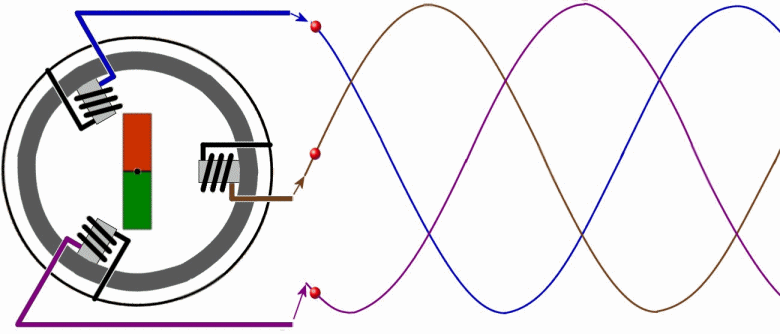Electronics 2
Now we talked so beautifully about diodes in the previous chapter, it's about time we learned something about diodes in motor vehicles. But first a small example of model building. Here you can see a light bulb for forward
and reverse travel. Together (5 and 6) they are connected to one pole of the DC motor's power supply.

The other pole (1, 2, 3 and 4) is guided to the light bulbs via two diodes. It is important that they are connected in opposite directions and integrated into the circuit. Depending on the polarity of the power supply, one or the
other diode interconnects. As you can see very faintly on the back of the circuit board, both lamps are connected to the oppositely clamped ones on the other side of the locomotive.
Even before the actual digitalization, this was a way to distinguish light when driving forward from that when driving backwards. Even today, you can still admire diodes in their own housing in cars; there just needs to be a
corresponding generator. You can see one of these above. There are 9 diodes working in the dark plastic housing with the cooling fins.
Here, on an older model, the diodes and their housings are pressed into the rear wall of the generator. One of its connections is made via the housing. Mainly because of them, there is a fan at the front, which is the only
component (see arrow) that determines the direction of rotation of the rotor. Below you can see that a generator produces three-phase current and therefore needs diodes.

Even a single diode, like the one above for the locomotive's light switch, would solve the problem. So if we assumed an alternating current in the picture below, all voltages below 0 volts would simply be filtered out. However,
this diode would have to be enormously large and be able to give off a lot of heat.

However, the dashed line shows what effective voltage would then remain. So there would be dramatic losses. The conversion of the chemical energy bound in the fuel into electrical energy is one of the most loss-making
processes. Actually, you should handle electricity in your car as carefully as possible.

If you use four diodes instead of one and connect them according to the picture on the left, the negative voltage components can also be used. You can see from the effectively usable voltage that it is significantly higher.

Now you may understand why so much effort goes into dividing the stator winding to produce a three-phase current. If you then rectify this with six diodes, the effective voltage is very close to the peak voltage of the positive
waves. And this means that less heat is generated at the back.
The remaining three diodes are smaller and tap off a direct current that is needed to excite the generator and thus start the process of generating electricity. That's why they are also called 'exciter diodes'.
|